第76章 CHAPTER XV THE BLUEBOTTLE: THE GRUB(4)
The exodus from the mortuary tabernacle was made through the round holes wherewith the skin is pierced. Those holes are the worms' work: of that there is no doubt; and yet we have lately seen the mothers refuse as a bed for their eggs any part whereat the flesh is protected by a skin of some thickness. The reason is the failure of the pepsin to act on epidermic substances. In the absence of liquefaction at such points, the nourishing gruel is unprocurable. On the other hand, the tiny worms are not able--or at least do not know how--to dig through the integument with their pair of guttural harpoons, to rend it and reach the liquefiable flesh. The newborn lack strength and, above all, purpose. But, as the time comes for descending into the earth, the worms, now powerful and suddenly versed in the necessary art, well know how to eat away patiently and clear themselves a passage. With the hooks of their spikes they dig, scratch and tear. Instinct has flashes of inspiration. What the animal did not know how to do at the start it learns without apprenticeship when the time comes to practice this or that industry. The maggot ripe for burial perforates a membranous obstacle which the grub intent upon its broth would not even have attempted to attack with either its pepsin or its grapnels.
Why does the worm quit the carcass, that capital shelter? Why does it go and take up its abode in the ground? As the leading disinfector of dead things, it works at the most important matter, the suppression of the infection; but it leaves a plentiful residuum, which does not yield to the reagents of its analytical chemistry. These remains have to disappear in their turn. After the fly, anatomists come hastening, who take up the dry relic, nibble skin, tendons and ligaments and scrape the bones clean.
The greatest expert in this work is the Dermestes beetle, an enthusiastic gnawer of animal remains. Sooner or later, he will come to the joint already exploited by the fly. Now what would happen if the pupae were there? The answer is obvious. The Dermestes, who loves hard food, would dig his teeth into the horny little kegs and demolish them at a bite. Even though he did not touch the contents, a live thing which he probably dislikes, he would at least test the flavor of that lifeless substance, the container. The future Fly would be lost, because her casing would be pierced. Even so, in the storerooms of our silk mills, a certain Dermestes (Dermestes vulpinus, FABR.) digs into the cocoons to attack the horny covering of the chrysalis.
The maggot foresees the danger and makes itself scarce before the other arrives. In what sort of memory does it house so much wisdom, indigent, headless creature that it is, for it is only by extension that we can give the name of head to the animal's pointed fore part? How did it learn that, to safeguard the pupa, it must desert the carcass and that, to safeguard the fly, it must not bury itself too far down?
To emerge from underground after the perfect insect is hatched, the bluebottle's device consists in disjointing her head into two movable halves, which, each distended with its great red eye, by turns separate and reunite. In the intervening space, a large, glassy hernia rises and disappears, disappears and rises. When the two move asunder, with one eye forced back to the right, the other to the left, it is as though the insect were splitting its brain pan in order to expel the contents. Then the hernia rises, blunt at the end and swollen into a great knob. Next, the forehead closes and the hernia retreats, leaving visible only a kind of shapeless muzzle. In short, a frontal pouch, with deep pulsations momentarily renewed, becomes the instrument of deliverance, the pestle wherewith the newly hatched bluebottle bruises the sand and causes it to crumble. Gradually the legs push the rubbish back and the insect advances so much toward the surface.
A hard task, this exhumation by dint of the blows of a cleft and palpitating head. Moreover, the exhausting effort has to be made at the moment of greatest weakness, when the insect leaves that protecting casket, its pupa. It emerges from it pale, flabby and unsightly, sorrily clad in the wings which, folded lengthwise and made shorter by their scalloped edge, only just cover the top of the back. Wildly bristling with hairs and colored ashen-gray, it is a piteous sight. The large set of wings, suitable for flight, will spread later. For the moment, it would only be in the way amid the obstacles to be passed through. Later also will come the faultless dress wherein the iridescent indigo-blue stands out against the severity of the black.